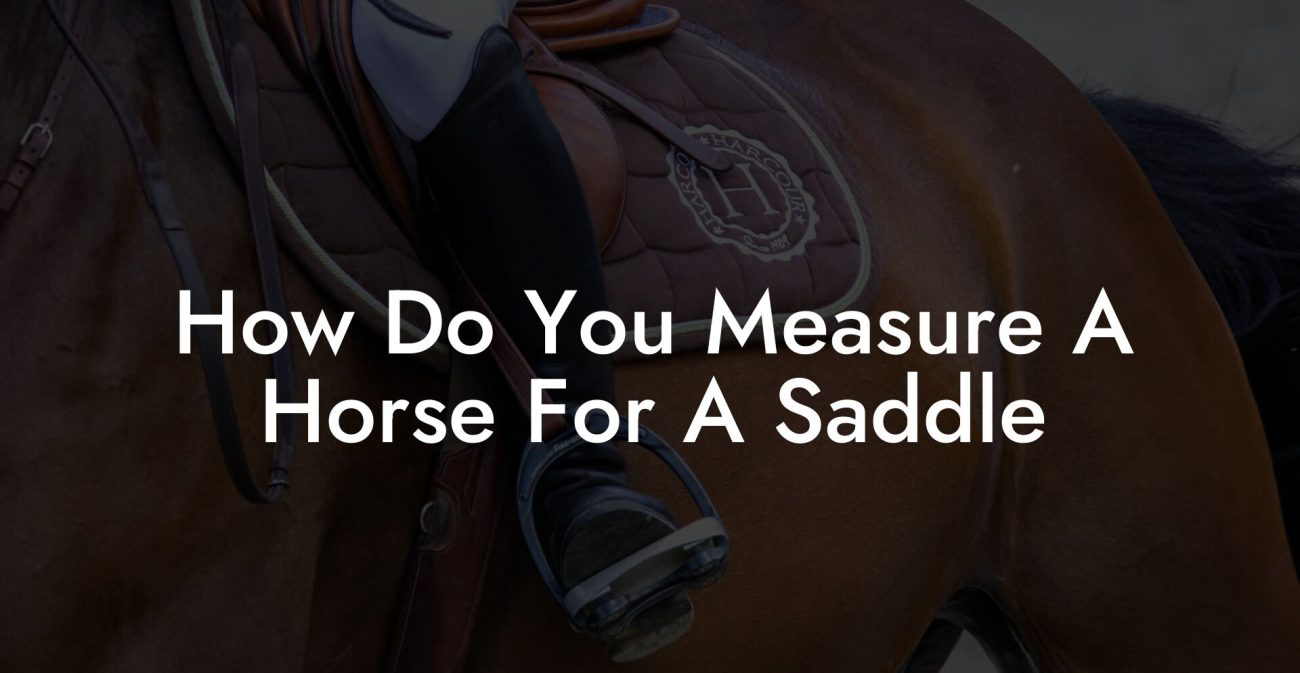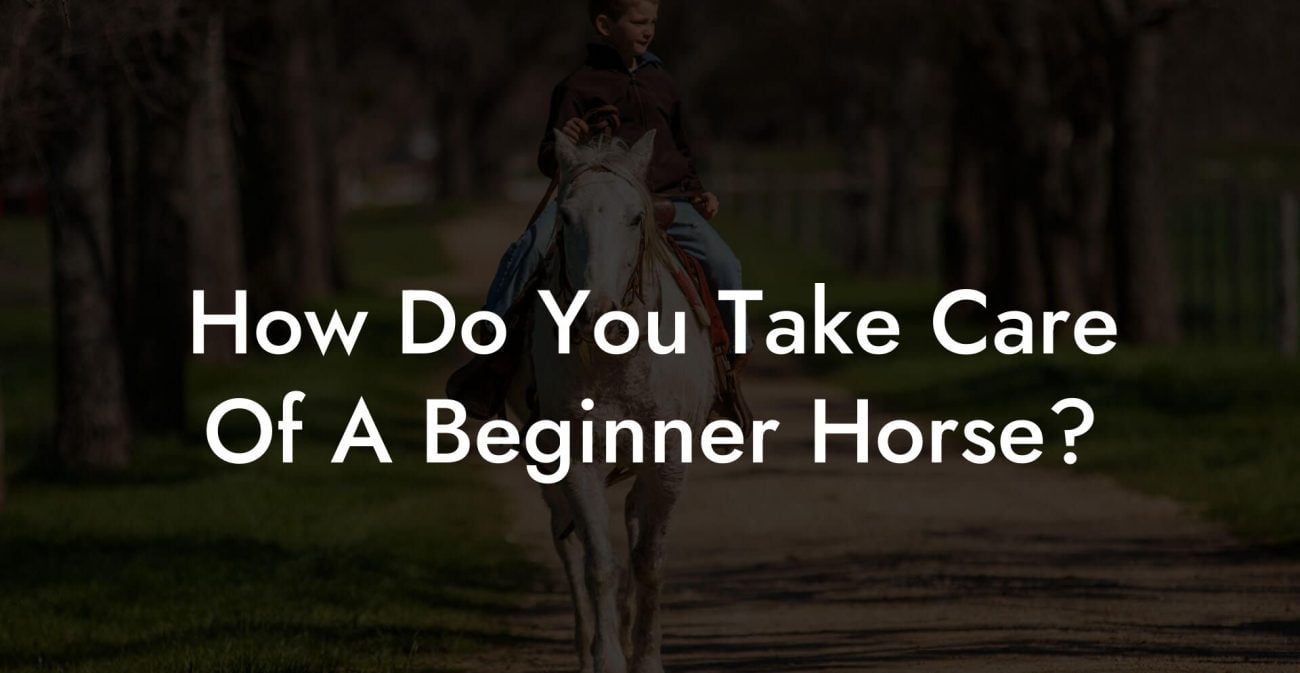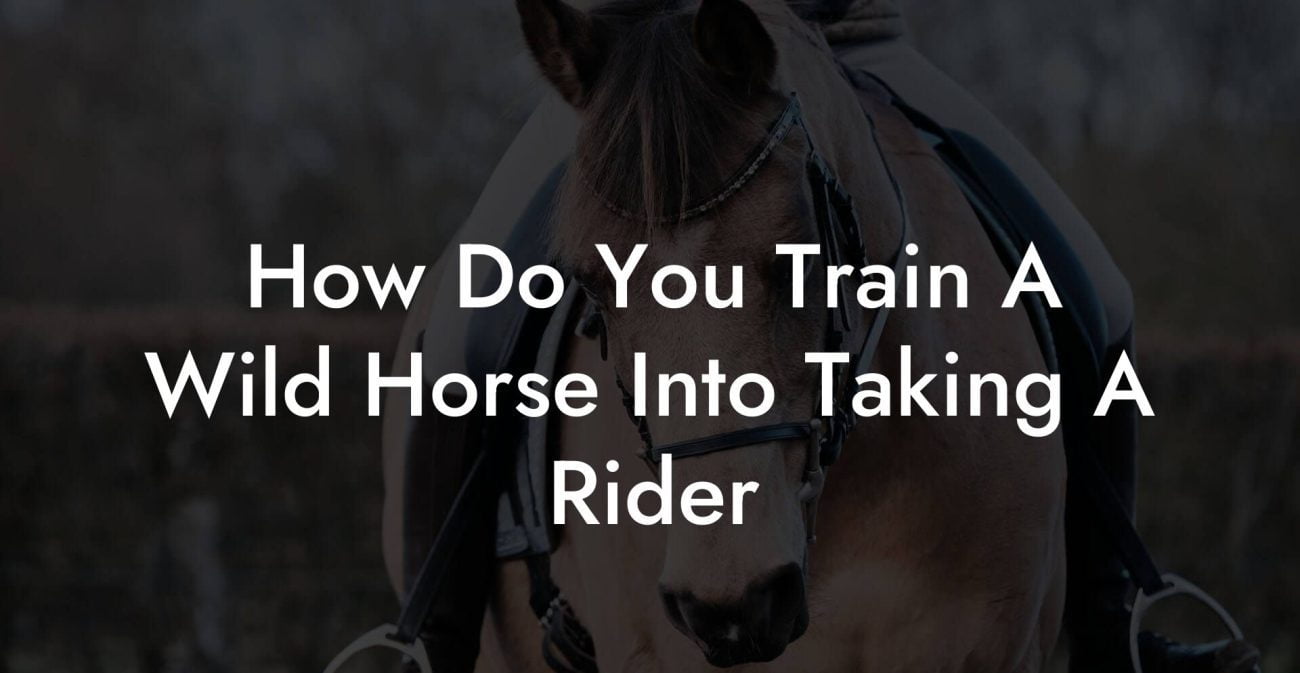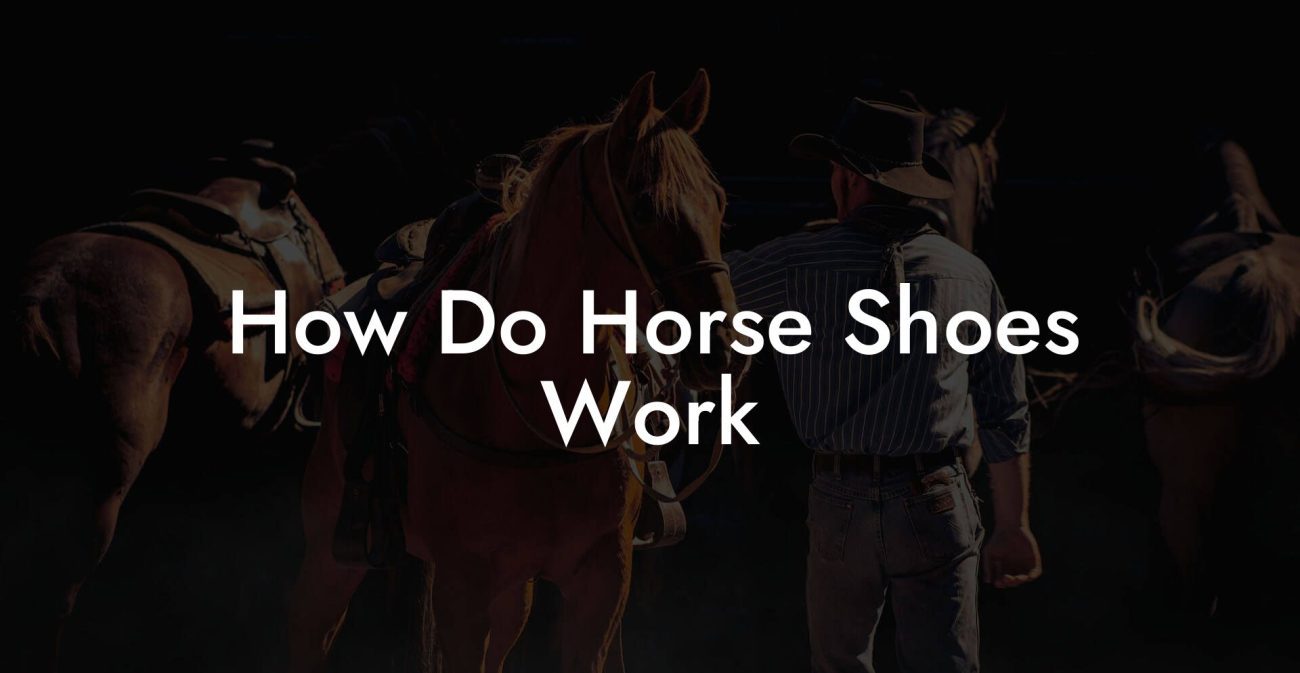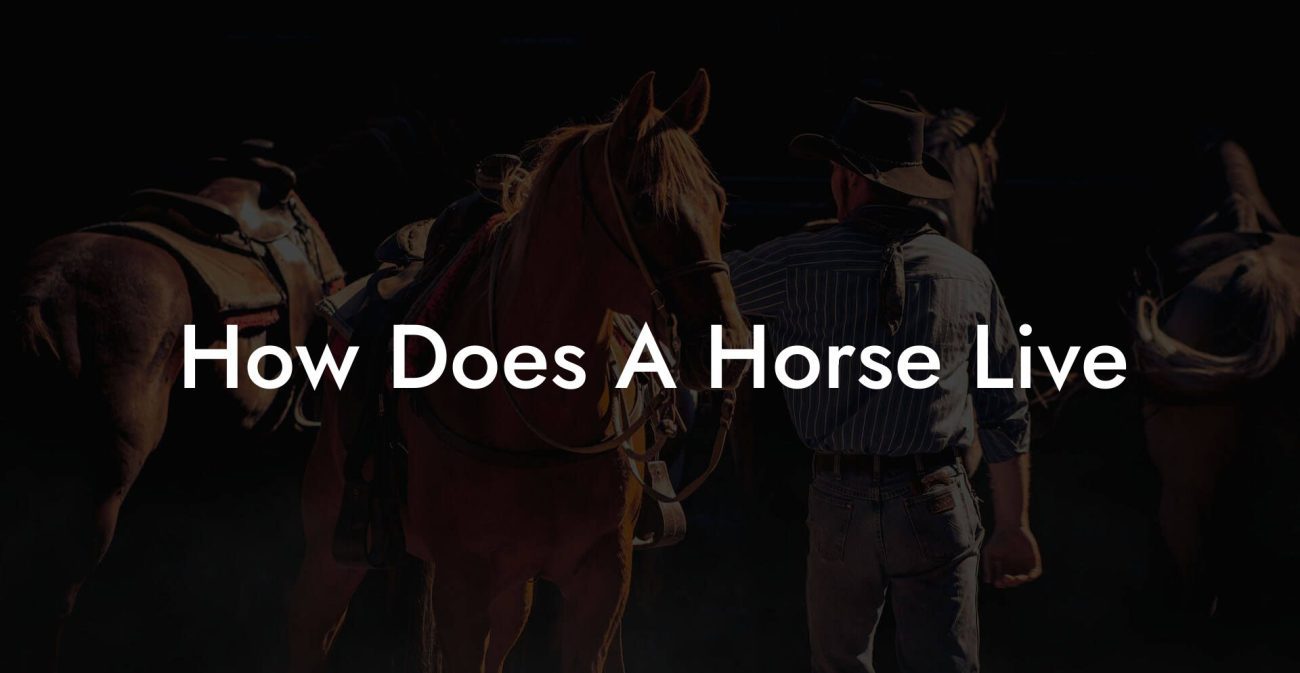The first time you tried to communicate with your horse, you might have wondered if you were speaking the same language at all. How do you train a horse in a way that not only builds a strong connection, but also keeps things chill, fun, and downright Instagrammable? Think of it as the ultimate blend of science, art, and a little bit of horse-whispering magic, a modern guide that transforms age-old equine training into a journey of mutual trust, respect, and a whole lot of heart.
Quick Links to Useful Sections
- What Is Horse Training and Why Does It Matter?
- The Pillars of Effective Horse Training
- Conventional Training Techniques: From Groundwork to riding
- Establishing Groundwork and Basic Commands
- Introduction to Riding and Advanced Commands
- Modern, Innovative Approaches to Horse Training
- Technology-Enhanced Training
- Innovative Training Techniques
- Safety First: Creating a Secure Training Environment
- Preparing Your Environment
- Using the Right equipment
- Mind the Mental Space
- Understanding Equine Behavior: The Psychology of Horse Training
- Decoding Body Language
- Building a Language of Trust
- Mindful Training Techniques: Cultivating a Zen Approach
- Staying Present in the Moment
- The Power of Positive Energy
- Building a Personalized Training Plan for You and Your Horse
- Step 1: Evaluate Your Horse’s Temperament and Needs
- Step 2: Set Clear, Achievable Goals
- Step 3: Incorporate a Variety of Training Modules
- Step 4: Stay Flexible and Adjust as Needed
- Resources and Community Support: Your Next Steps
- Equine Success Stories: Real-Life Transformations in Horse Training
- Case Study 1: From Shy to Show-Stopping
- Case Study 2: The Reinvention of an Experienced Veteran
- Case Study 3: Breaking the Cycle of Miscommunication
- Integrating Equine nutrition and Overall Care in Training
- Balanced Diet for Peak Performance
- Holistic grooming and Care
- Overcoming Common Challenges in Horse Training
- Dealing with Stubbornness
- Managing Fear and Anxiety
- Navigating Communication Gaps
- Frequently Asked Questions About Horse Training
- Your Journey to a Deep Connection: Train, Trust, Triumph
What Is Horse Training and Why Does It Matter?
At its core, horse training is about establishing clear communication with an animal renowned for its intelligence and sensitivity. It’s less about commanding and more about cultivating a partnership, a team where both you and your horse are in tune with each other’s cues. Whether you’re a Gen-Z adventurer looking for a new hobby or a millennial aiming to reconnect with nature, the art of training a horse means developing a two-way street of respect, consistency, and plenty of positive vibes.
When you train a horse, you’re not just teaching them to trot, canter, or jump over hurdles; you’re building a bond that can last a lifetime. And let’s not forget, in today’s digital age, well-trained horses also become star content for your TikTok or Instagram reels. Integrating modern techniques with traditional methods can transform your equine companion into both a reliable partner and a social media sensation.
In essence, effective horse training brings out the best in both you and your horse, from improved athletic performance to a deeper, more mindful connection that enriches your everyday lives.
The Pillars of Effective Horse Training
Developing a training plan for your horse is a lot like assembling the perfect playlist: you need the right mix of beats, rhythms, and occasional pauses to let the magic happen. Here are some key pillars that every successful horse training regimen should include:
- Trust and Connection: The foundation of any good relationship. Without trust, neither you nor your horse will be able to communicate or perform at your best.
- Consistency: Just like your daily social media ritual, consistency builds habit and confidence, both in you and your equine friend.
- Communication: Using both verbal commands and body language. Horses pick up on the smallest signals, be clear, be patient, and always be kind.
- Positive Reinforcement: Rewards, treats, and praise that let your horse know they’ve nailed it. Think of it as the equine equivalent of getting likes and retweets.
- Safety and Respect: Every move you make should prioritize the well-being of your horse. A calm, safe environment is key to learning and progression.
- Adaptability: Every horse is unique. A one-size-fits-all approach just won’t cut it. Tailor your techniques to suit your horse’s personality and individual needs.
These pillars form the backbone of an approach that marries traditional horsemanship with modern training techniques, ensuring that both novice riders and seasoned equestrians can enjoy a fulfilling journey.
Conventional Training Techniques: From Groundwork to riding
Let’s get down to basics: the conventional methods that have been trusted over centuries. While modern technology continues to reshape the world of equine training, these time-honored approaches still hold their ground.
Establishing Groundwork and Basic Commands
Groundwork is the stage where all the magic begins. This involves teaching your horse to follow simple commands, respond to body language, and develop the crucial bond of trust before you even get on their back. Begin with activities like leading, stopping, backing up, and yielding to pressure. The idea is to create a respectful, non-threatening space where your horse feels secure.
A few tips:
- Always approach your horse calmly and confidently.
- Use gentle, consistent cues. Over time, even the smallest signal will carry significant weight.
- Keep sessions short but frequent, a few minutes each day go a long way.
Introduction to Riding and Advanced Commands
Once your horse responds well to groundwork, it’s time to saddle up. Transitioning from the ground to riding is one of the most exciting parts of the training journey. During riding sessions, techniques such as lungeing, posting trot, and transitions from trot to canter become integral parts of the training menu.
The process of learning to ride is a gradual one. Think of it as leveling up in your favorite video game, each progression unlocks new skills and opportunities for a better connection. Focus on balance, clear cues, and remember that every misstep is just a setup for a future win.
This phase emphasizes the importance of a solid foundation, both you and your horse need to trust each other to achieve advanced maneuvers safely and effectively.
Modern, Innovative Approaches to Horse Training
In the era of smart everything, from phones to fridges, horse training has also experienced a digital makeover. Embracing innovative methods doesn’t mean discarding traditional wisdom; it means blending the best of both worlds.
Technology-Enhanced Training
Imagine having a virtual coach in your pocket. Today’s trainers use apps, wearable tech, and video analysis to monitor progress and fine-tune training regimes. Devices that track heart rates, pace, and movement patterns are game-changers. They not only help you understand your horse’s physical responses during training but also offer insights into how to adjust your methods.
Consider incorporating these modern tools into your sessions:
- Equine Fitness Trackers: These gadgets measure performance metrics, ensuring your horse is training safely and effectively.
- Video Analysis Apps: Record your training sessions and review them to better understand your horse’s body language and responses. You might catch a subtle cue that can open up a whole new level of communication.
- Virtual Communities: Online groups and social media platforms allow you to share experiences, ask for expert advice, and even join live training sessions with renowned trainers.
Innovative Training Techniques
Beyond tech gadgets, innovative training techniques are making waves in the equestrian world. Methods that incorporate neuro-linguistic programming (NLP) and modern behavioral psychology are showing promise in accelerating the learning process. These techniques focus on understanding the mindset of your horse and tailoring training sessions to match their cognitive responses.
For example, some trainers now use targeted exercises that simulate various scenarios, helping horses become more adaptable, confident, and responsive under pressure. This not only benefits performance but also prepares your equine partner for unpredictable real-life situations, be it an unexpected detour on a trail ride or a sudden change in their routine.
Safety First: Creating a Secure Training Environment
Just like your favorite roller coaster, horse training should be thrilling, but never at the expense of safety. Establishing an environment where both you and your horse feel secure is paramount. After all, a safe session is a productive session.
Preparing Your Environment
Safety starts with where you train. Whether it’s an arena, a pasture, or a makeshift training area in your backyard, ensure the space is free of hazards. Look out for slippery surfaces, sharp objects, or anything that might cause your horse to spook.
Using the Right equipment
Investing in quality gear is a no-brainer. From a well-fitted saddle to reliable lead ropes and protective boots, every piece of equipment should be chosen with your horse’s comfort and safety in mind. Regularly inspect your gear and replace items that show signs of wear and tear.
Mind the Mental Space
While physical safety is essential, mental safety shouldn’t be overlooked. Horses are hypersensitive to body language and energy. Maintain a calm, assertive demeanor during training sessions, and always be aware of the signals you’re sending. A stressed or anxious trainer can inadvertently create a stressful environment for their horse.
Remember, a well-prepared and secure training space builds the trust that allows your horse to learn, explore, and grow.
Understanding Equine Behavior: The Psychology of Horse Training
Horses are complex creatures with their unique personalities, fears, and impulses. To train a horse effectively, you need to tap into this inner world and understand what makes your four-legged friend tick. Think of it as an exciting deep dive into the psychology of equines, a blend of instinct, emotion, and a touch of whimsy.
Decoding Body Language
Horses communicate primarily through body language. A twitch of the ear, a shift in posture, or even the way they move their tail can reveal volumes about their mood and state of mind. Learning to read these cues not only helps you prevent potential issues before they escalate but also allows you to celebrate the small wins when your horse finally “gets it.”
Start by observing your horse in different situations. Is there a particular cue that signals discomfort or excitement? Once you know what to look for, adjust your training methods accordingly to foster a sense of safety and understanding.
Building a Language of Trust
Communication goes both ways. Just as you learn to understand your horse’s non-verbal cues, your horse learns your signals. This reciprocity builds a language of trust over time. Clear, consistent signals help your horse predict what’s coming next, reducing the chances of fear-based reactions.
Incorporate exercises that emphasize eye contact, gentle touch, and consistent cues. The more your horse learns to interpret your signals, the more seamlessly you can navigate tricky training scenarios.
Mindful Training Techniques: Cultivating a Zen Approach
Training a horse isn’t just a physical activity, it’s an emotional and mental adventure too. Embracing a mindful, zen approach can elevate your sessions from routine drills to transformative experiences. Think of it as yoga for both the rider and the horse.
Staying Present in the Moment
With the endless distractions of modern life, it’s easy to let your mind wander. In training sessions, however, staying fully present can make a significant difference. Focus on your breathing, be aware of the rhythmic cadence of your horse’s movements, and immerse yourself in the environment around you.
A calm, centered mindset not only boosts your performance but also radiates a soothing influence on your horse. When you’re fully engaged, your horse picks up on that energy and, in turn, feels more secure and receptive to learning.
The Power of Positive Energy
Energy is contagious, especially in the world of equine training. Filling your sessions with upbeat, positive energy can inspire your horse to push past its comfort zones. Celebrate every little milestone, and don’t be afraid to use humor as a tool to diffuse tension.
Whether it’s a goofy moment captured on video or a quiet breakthrough during a challenging routine, every positive experience lays the groundwork for a stronger, more trusting partnership.
Building a Personalized Training Plan for You and Your Horse
There is no one-size-fits-all strategy when it comes to training a horse. Like crafting your playlist on your favorite streaming service, it’s about mixing the right tracks, or training techniques, to match your unique style and your horse’s personality.
Step 1: Evaluate Your Horse’s Temperament and Needs
Begin with an honest assessment of your horse’s current abilities, triggers, and preferences. Is your horse naturally curious and eager to learn, or does it need a bit more coaxing to trust new experiences? Understanding these subtle nuances helps you tailor a program that’s as individual as your Instagram feed.
Step 2: Set Clear, Achievable Goals
Whether your aim is to master basic commands, refine advanced riding techniques, or simply bolster the bond between you and your horse, be sure to set realistic milestones. Break long-term objectives into bite-sized, achievable steps. This approach keeps both you and your equine partner motivated, because who doesn’t love ticking off goals on a to-do list?
Step 3: Incorporate a Variety of Training Modules
A balanced training program should integrate:
- Basic Groundwork: Reinforce essential commands and body language cues.
- Riding Sessions: Build confidence through a mix of flatwork, trotting, and cantering exercises.
- Innovative Techniques: Utilize technology, video review, or even fun obstacle courses to keep things fresh and engaging.
- Mindfulness Breaks: Incorporate moments of calm and relaxation to keep stress levels in check.
- Positive Reinforcement: Reward progress with treats, praise, or even a well-deserved break.
Step 4: Stay Flexible and Adjust as Needed
Just as no two days are the same when scrolling through your social media feed, your horse’s mood and performance can vary. Keep a training journal to log observations, and be ready to modify your plan on the fly. Adaptability is key to progression and sustained success.
Over time, you’ll fine-tune your routine and create a personalized training plan that perfectly balances challenge and fun.
Resources and Community Support: Your Next Steps
Training a horse is a journey you don’t have to traverse alone. Today’s digital landscape offers a wealth of resources, support groups, and communities that can help guide your path. From online forums buzzing with tips to local equestrian clubs that host workshops and events, the options are endless.
Here are some stellar resources to check out:
- Equine Training Forums: Join communities where seasoned trainers and enthusiastic beginners share insights, successes, and hilarious misadventures.
- YouTube Channels & Podcasts: Find experts who break down complex techniques into bite-sized, relatable content, perfect for your on-the-go lifestyle.
- Local Riding Clubs and Equestrian Centers: Nothing beats in-person training and community events. These hubs offer tailored advice and hands-on sessions.
- Social Media Groups: Platforms like Instagram, Facebook, and TikTok feature vibrant communities posting daily inspiration, tutorials, and real-time training tips.
- Online Courses and Webinars: Dive deep into modern training techniques with courses designed specifically for today’s tech-savvy equestrian.
Engaging with these communities can motivate you to experiment, learn continuously, and even share your own journey, after all, every training session, mishap, and breakthrough makes for great content.
Equine Success Stories: Real-Life Transformations in Horse Training
Nothing sparks inspiration like genuine tales of transformation. Here are a few success stories from trainers who have tackled challenges head-on and emerged victorious:
Case Study 1: From Shy to Show-Stopping
Bella, a once timid mare with a tendency to spook at sudden movements, was transformed under the gentle guidance of her trainer, Jake. With a focus on groundwork, clear communication, and lots of treats, Bella gradually became one of the friendliest horses in the stable. Today, she not only performs complex riding routines but also stars in local shows, proving that patience and love can turn fear into confidence.
Case Study 2: The Reinvention of an Experienced Veteran
Rocky, an older stallion with years of history and a stubborn streak, was a challenge for his new trainer, Maya. By integrating modern technology such as video analysis and building a personalized training program that balanced challenge with relaxation, Maya helped Rocky rediscover his passion for learning. His remarkable progress not only boosted his performance in the arena but also rekindled a forgotten spark, a true testament to how innovation can rejuvenate spirit.
Case Study 3: Breaking the Cycle of Miscommunication
For many, miscommunication between horse and trainer can lead to frustration for both parties. Enter Alex and his horse, Duke. With Duke being a naturally headstrong colt, Alex dedicated weeks to mastering body language signals and consistent reinforcement techniques. Slowly but steadily, Duke began to respond with enthusiasm. Their journey showcases that with persistence and a dash of humor, even the most challenging horses can unlock their hidden potential.
These stories aren’t just feel-good anecdotes, they underline the transformative power of blending traditional horsemanship with modern, innovative training techniques that resonate with today’s fast-paced, mindful lifestyle.
Integrating Equine nutrition and Overall Care in Training
Training a horse is not only about the mental and physical exercises; it’s also about fueling that powerhouse with the right nutrition, care, and attention. The food your horse eats and the way you care for its body can significantly affect training outcomes.
Here’s a sneak peek into the nutrition side of things:
Balanced Diet for Peak Performance
A well-fed horse is a happy horse. Focus on a balanced diet rich in quality hay, grains, and supplements that support muscle repair and overall energy. Think of it as curating a gourmet meal plan that energizes them for daily training challenges.
A few nutritional tips:
- Fiber First: Hay should remain a constant in your horse’s diet. It aids in digestion and provides essential nutrients.
- Protein Power: Lean protein sources can boost muscle recovery and support energy levels, especially after intense training sessions.
- Hydration is Key: Ensure your horse always has access to clean water. Hydration impacts everything from digestion to muscle function.
- Supplements Smartly: Depending on your horse’s needs, consider supplements like vitamin aids or joint support formulas, but always consult a vet before making dietary changes.
Holistic grooming and Care
Regular grooming isn’t just about aesthetics; it’s a crucial part of the training routine. Grooming sessions allow you to check for injuries, build mutual trust, and even create moments of calm interaction. Incorporate massages or soothing brushes into your routine to help your horse relax and recover after an intense session.
Overcoming Common Challenges in Horse Training
No matter how passionately you approach training, challenges are bound to pop up, kind of like unexpected pop quizzes in your favorite online course. From stubborn behavior to communication gaps, here are some common hurdles and ways to leap over them:
Dealing with Stubbornness
Every horse has its quirks. If your horse seems set in its ways, double down on consistency and positive reinforcement. Avoid punishment-based methods, which can erode trust. Instead, celebrate small progressions and adjust your approach based on real-time feedback.
Managing Fear and Anxiety
Horses, like us, can have off days. If your equine friend gets skittish, slow things down and give them time to acclimate. Gradual desensitization and a calm, steady voice can go a long way in reducing anxiety, promoting an environment where confidence can grow.
Navigating Communication Gaps
Sometimes it feels like your horse is speaking a dialect all its own. Invest time in learning more about equine body language and experiment with varied cues until you find what resonates best. Getting feedback, whether through video analysis or a seasoned trainer’s advice, can offer new insights and unexpectedly fun breakthroughs.
Frequently Asked Questions About Horse Training
We’ve rounded up some of the most burning questions from riders, trainers, and curious enthusiasts alike. Dive in to find answers that can help steer you in the right direction.
1. What exactly does horse training involve?
Horse training is the process of developing a strong, respectful partnership between you and your horse. It involves teaching basic commands, building trust, and using consistent, positive reinforcement to improve both behavior and performance.
2. How long does it take to train a horse?
Every horse is unique, so the timeline for training varies. Some horses quickly adapt to new cues, while others may need several weeks or months of consistent practice before noticeable progress is made.
3. Can I train my horse at home without professional help?
Yes, with the right research and patience, many owners successfully train their horses at home. However, consulting with professional trainers either in person or through online courses can accelerate the learning curve and provide valuable insights.
4. How important is positive reinforcement in horse training?
Positive reinforcement is crucial. Rewarding your horse with treats, praise, or a brief break not only encourages the desired behavior but also strengthens the bond between you both.
5. Are there modern tools that can help optimize horse training?
Absolutely. Modern technology like equine fitness trackers, video analysis apps, and online communities can provide detailed feedback and motivation to enhance your training sessions.
6. What should I do if my horse refuses to cooperate?
Patience is key. If your horse seems uncooperative, consider revisiting the basics of trust, check for any environmental stressors, and, if needed, consult an experienced trainer for personalized advice.
7. Is horse training only for competitive riding?
Not at all. Whether you’re training for competitive events or simply to enjoy leisurely trail rides with your best buddy, the core principles of training apply universally.
8. How do I know if my training methods are effective?
Consistent progress, improved communication, and a stronger bond with your horse are key indicators that your methods are working. Keeping a journal to track milestones can also provide you with clear insights into your progress.
9. Can I combine traditional training with modern techniques?
Absolutely! In fact, the best training programs interweave time-tested methods with innovative approaches for a dynamic, holistic experience.
10. Where can I find support and resources for horse training?
Look for local equestrian clubs, online communities, YouTube channels dedicated to horse training, and Instagram groups where both experts and enthusiasts share their experiences and tips.
Your Journey to a Deep Connection: Train, Trust, Triumph
Training a horse is more than a daily routine, it’s a lifestyle, a journey of mutual discovery, and a celebration of the bond that forms when two very different beings learn to move as one. As you integrate proven methods, modern technology, and a healthy dose of mindfulness into your training regimen, you’re not only teaching your horse new skills, you’re crafting a relationship built on trust, passion, and shared victories.
Every training session is an opportunity to grow closer, to learn something new, and to turn challenges into the stories you’ll tell for years to come. Whether it’s a slow, measured pace that builds a foundation or an intense session that leaves you both exhilarated and exhausted, each moment is part of the adventure.
So step into the arena with confidence and creativity. Embrace the mishaps along with the triumphs, knowing that every stumble, every small breakthrough, and every moment of unspoken understanding is a milestone on your journey. In the end, training a horse isn’t just about perfecting techniques, it’s about creating something truly magical together. Your adventure awaits!




